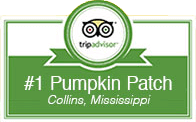Speed—Spell Slaves
William Wages Spell, Jr. and Keziah Duckworth Speed, acquired one of the young Booth slave girls by 1827. By 1840, they owned 5 slaves – 3 adult females and 2 females under ten. In 1850, the total had increased to eleven – 7 females and 4 males. Ten years later, they owned 16 slaves – 10 females and 6 males. The 1860 census also shows that there were five slave houses on the property.
The 1870 census lists the Booths as a separate household. The Booth family listed under W. F. Spell were: Isom, aged 38; Keziah, aged 33; M. J., aged 17; Levi, aged 16; Moriah, aged 12; Washington, aged 11; William, aged 10; John W., aged 5; J. L., aged 4; J. F. aged one month old. Also, there is a 17 year old Willey Owens listed with this Booth family. (Hopewell Church records also lists Willey (Wylie) Owens as one of its founders.)
Isom Booth (also spelled Isham, or Isam) was born in 1824, and died March 31, 1905. He and other family members are buried in the Hopewell Church Cemetery. Isom has a Masonic grave marker. The Hopewell Church was established by the negroes after the slaves had been freed. The Speed slaves who had died before this time, were buried in a cemetery plot on the Speed property. (The Speed family members were buried in church cemeteries as it was unacceptable to bury whites and blacks in the same cemetery.)
The fourth child of Isom and Keziah Booth, was George Washington Booth. He married Annie Meyers and she bore him six children: Bertha, Rose Ella, Babe Keziah, Bessie, Frederick Douglas, and Van Buren. Then Annie died, and George Washington Booth married Laura Bell Crosby who bore him fourteen children: Anna, Walter, Della, Booker T., Dock, Vashti, Varie, Verneda, J. P., Viola, George, and two more who died young, then Claiborn, and Annie.
After the slaves were freed, they homesteaded land to the north and east sides of the Speed-Spell property. Isom and his sons, Will, George Washington, William, and Levi Booth owned the adjacent land. The others moved further on up “Nigger Ridge”, as the community was to be referred to, and settled.
Even though the negroes were no longer slaves, many would work as day laborers for their former owners. And some just “came ’round for the friendship. ‘Ole Isom Booth was a good example, for he worked for his former owner, visited with “the boys”, and also maintained his own household.
A favorite pastime by the fire side at night was to sing hymns, the old Sacred Harp songs, sung by the shape of the notes. A favorite family tale relates how Isom Booth was lying on the floor on the Boy House with his feet toward the fire as the song was being “lined” and sung. One person with the song book would sing a line, then the others would repeat the same line, etc. During the singing, Isom’s shoes became hot and began to smoke. The “liner” never missed a beat of time, but inserted an extra line, “Isom, your feet are a-fire!” The group rhythmically repeated the line, then went on to the next verse.
The earliest Booths who received land patents were: Isham (Isom) Booth, 160 acres in 1869; John A. Booth, Leven Booth, and Joseph Booth, Each received 80 acres in 1869; Jesse Booth, 160 acres in 1881; William Booth, 160 acres in 1882; Minor Booth, 160 acres in 1888; and Thomas Booth, 160 acres in 1889.
Spell-Speed Family History
PREFACE
to this work
PAGE 1
Author's Philosophy, Spell Family Tree, Armorial Bearings of Spell, Preface
Page 2
Spell: Earliest Known
Page 3
William Frederick Spell, Private, CSA
Page 4
William Frederick Spell, Wife and Family
Page 5
Speed: Earliest Known
Page 6
Speed: Covington County, Mississippi
Page 7
Lawrence
Page 8
William Wages Speed, Jr.
Page 9
Speed - Spell Slaves
Page 10
Duckworth
Page 11
Memories
Page 12
Will of Benjamin Lawrence Will of Rachel Lawrence
Page 13
Speed - Spell House, Floor Plan of Speed - Spell House, Diagram of Speed - Spell Farm, Map of Spell Settlement,
Page 14
Bunker Hill Lodge Charter Membership
Page 15
Genealogical Records
Page 16
Genealogy Links


